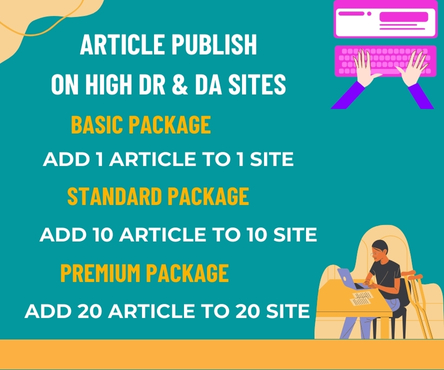Are you looking to improve your website, but don’t know where to start? Don’t worry, we’ve got you covered! In this blog post, we’ll show you five easy steps that you can take to upgrade your website and make it more user-friendly. Whether you’re a beginner or an experienced webmaster, these Ways to improve a website will help you get the most out of your website. So let’s get started!

Conduct a User Experience (UX) Audit
When it comes to improving a website, conducting a user experience (UX) audit is an essential first step. This process evaluates how users interact with and experience the website, helping you identify areas for improvement.
A UX audit starts by examining the structure of your website. This includes analyzing page layouts, navigation menus, and other components of your site’s design. The goal is to determine if users can easily find what they are looking for and complete the tasks they want to accomplish.
Once the structure of the website has been examined, you should also evaluate its content. This involves assessing the readability and relevance of text, images, videos, and other elements on each page. Does the content provide useful information that will be valuable to visitors? Is it well-written and easy to understand?
Finally, the performance of your website should be evaluated. Does it load quickly on all devices? Are pages optimized for mobile devices? How does your website perform in terms of search engine optimization (SEO)?
By conducting a comprehensive UX audit of your website, you can identify any weak points and devise strategies for improving them. This will help ensure that your website is as user-friendly as possible, making it more enjoyable and effective for your visitors.
Improve Your Web Design
Design is an integral part of a website’s success. Poor design can be a major turn off for potential customers and users. On the other hand, a well-designed website can be much more inviting and easier to navigate. Here are some key points to keep in mind when it comes to improving your web design.
- Make sure your website is responsive. Responsive web design means that your website automatically adjusts itself to fit any device or screen size. This ensures that users have a seamless experience regardless of what device they’re using.
- Follow web design best practices. These include the use of contrasting colors, a clear hierarchy of content, and plenty of white space. Design elements should also be consistent throughout the website, so visitors know what to expect.
- Use relevant images and visuals. Images help break up text and make the website more visually appealing. It’s also important to use high-quality images that are relevant to your content.
- Incorporate simple animations. Simple animations like hover states can help draw attention to specific elements on the page.
- Optimize for mobile users. Mobile traffic is growing exponentially and now accounts for over 50% of all web traffic. It’s essential to optimize your website for mobile users by ensuring that the layout and design are optimized for smaller screens.
By following these tips, you can ensure that your website has an engaging and user-friendly design that will help drive conversions and boost engagement.
Optimize Your Website for Search Engines
Search engine optimization (SEO) is an important aspect of website improvement. When done correctly, it can help your website rank higher in search engine results, making it easier for potential customers to find your site. Here are a few key things you can do to optimize your website for search engines:
- Utilize Keywords: Using relevant keywords throughout your website is one of the most important ways to optimize your website for search engines. Research relevant keywords and phrases related to your product or service and use them throughout your website’s content, including titles, headings, and meta descriptions.
- Improve Page Load Speed: Having a fast loading website is essential for SEO. A slow loading website may get flagged by search engine algorithms, resulting in lower rankings. To improve page load speed, ensure that your images are compressed and optimized for the web, use browser caching, and reduce server response time.
- Create Quality Content: Content is king when it comes to SEO. It’s important to regularly update your website with fresh, relevant content. This can include blog posts, product descriptions, FAQs, and more. You should also use proper formatting and avoid keyword stuffing.
- Build Backlinks: Search engines use backlinks as a signal of authority and relevance. That’s why it’s important to build backlinks from other websites that are related to your business. You can do this by guest blogging, submitting to web directories, participating in forums and Q&A sites, and asking customers for reviews or testimonials.
By utilizing these tips, you can optimize your website for search engines and make sure that it appears prominently in search results. This will make it easier for customers to find you and ultimately lead to more traffic and conversions.
Increase Your Page Load Speed
If your website’s page load speed isn’t up to par, it can have a serious impact on user experience. People expect web pages to load quickly, so if your website takes too long, they may move on to a competitor’s site. You can increase page load speed in a few different ways.
First, you should optimize your images and reduce their file size. This is one of the most effective ways to reduce page load speed. When you upload images to your website, be sure to compress them using a tool like TinyPNG. This will help to reduce the file size without sacrificing quality.
You should also consider minifying your HTML, CSS, and JavaScript files. Minifying means removing unnecessary characters like white space and comments from the code. This helps to reduce the size of the file and make it easier for web browsers to process.
Finally, use a content delivery network (CDN). A CDN allows you to store static content like images, videos, and other files on servers located around the world. This helps to reduce latency and ensure that users can access your website quickly regardless of where they are located.
By following these steps, you can improve your website’s page load speed and ensure that users have a better experience.
Implement Effective Lead Generation Strategies
Lead generation is essential for the growth and success of your website, and can be accomplished in many ways. In order to increase leads, you need to be able to get users to engage with your website and opt-in to receive more information from you. Here are some strategies for effective lead generation that can help you improve your website:
- Create Quality Content: High-quality content is the cornerstone of any successful website. You want your visitors to find your content interesting and engaging, so make sure it’s well written and up-to-date. You can create blog posts, videos, podcasts, and other types of content that’s tailored to your target audience.
- Offer an Opt-In: Offer your visitors the chance to sign up for a newsletter or other email list where they can receive updates from you. This way, you can continue to nurture leads even after they leave your website.
- Utilize Social Media: Social media is an excellent tool for lead generation. Post links to your website on popular social media platforms and be sure to respond to comments and messages quickly. This will help build trust with potential leads and show them that you care about their opinions.
- Use A/B Testing: A/B testing helps you figure out which elements of your website are working best for lead generation. Try different headlines, images, or call-to-actions to see what resonates most with your visitors and helps generate more leads.
- Invest in Paid Ads: Paid advertising can be an effective way to generate leads if done correctly. Identify the right platforms, audiences, and keywords that match your goals and budget, then run targeted campaigns with engaging content.
By implementing these lead generation strategies on your website, you should be able to boost conversions and increase the number of leads coming in. However, you also need to have a process in place to track and measure results so you can continually optimize and improve your website’s performance.

